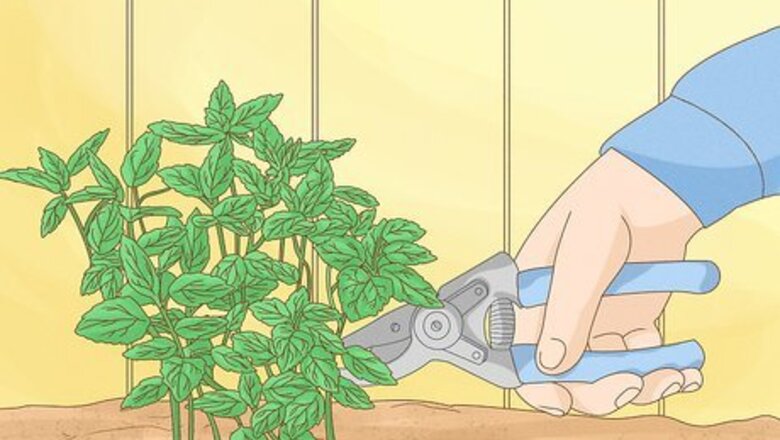
views
Acquiring the Mint
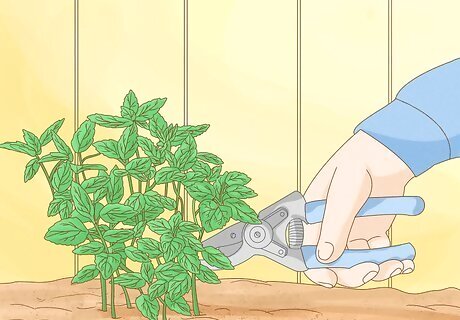
Take a cutting from a pre-existing mint plant. Mint is difficult to grow from seed, and it is virtually impossible for some varieties, like peppermint. Cut a 4 inch (10 cm) sprig about ½ inch (1 cm) above a junction to allow new branches to grow in its place. The sprig does not need to have many leaves, and almost any sprig will do. Place the sprig in a glass of water, and remove any leaves that fall below the water line. Within a week, small white roots should appear under water. Wait a few more days to another week to allow the roots to develop into a decent length. Add water to the glass as necessary. Make sure that you change the water every four to five days to prevent rot.
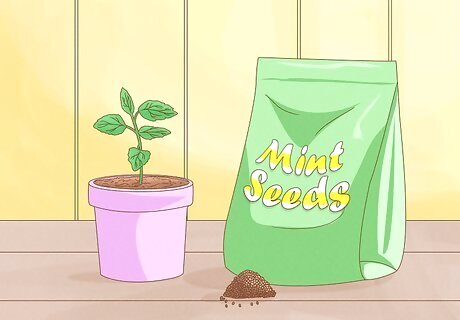
Purchase a mint seedling or small mint plant. You can find mint seedlings at most nurseries and garden stores. There are many varieties of mint, such as sweet mint, chocolate mint, spearmint, lemon mint, apple mint, and peppermint. Spearmint is most commonly used for cooking. Mint is a fast-growing, fast-spreading plant and is perfect for one of your first attempts at growing plants.
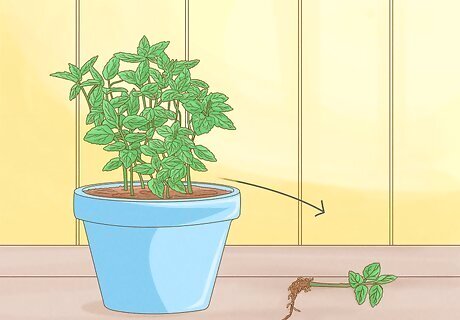
Find a runner from a current plant. Runners are long stems that grow away from the current plant and set their own roots in the ground. These can be carefully dug up and transplanted. If you have a friend growing mint, the plants will have runners that could be transplanted.
Planting the Mint
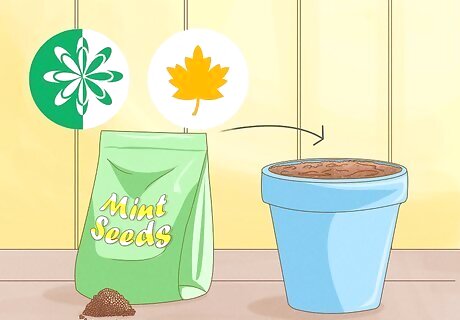
Choose the best time for planting the mint. Ideally, you should plant your mint in the spring, or in the fall if you're in a climate that is free of frost. Though mint is a resilient plant, it's best to start growing it under optimal conditions.
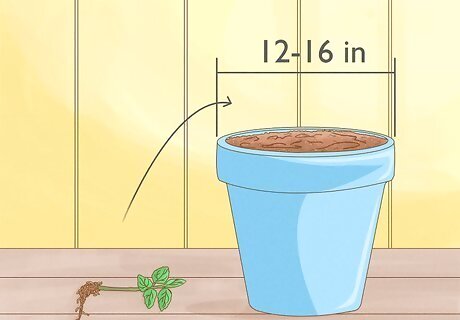
Transplant the seedling or rooted sprig into a container. Potting mint is the most popular way to grow it because you can easily keep it in check this way, as well as keeping it close to your kitchen so you can use it frequently. Mint spreads rapidly, and its roots have a tendency to choke out the roots of other plants. As a result, it is often best to plant mint in a container without other plants. Use a 12-to-16-inch wide pot for one plant. You should add a water-retaining polymer to the potting soil so that it stays moist and doesn't dry up. You can also use pearlite or vermiculite instead of a polymer.
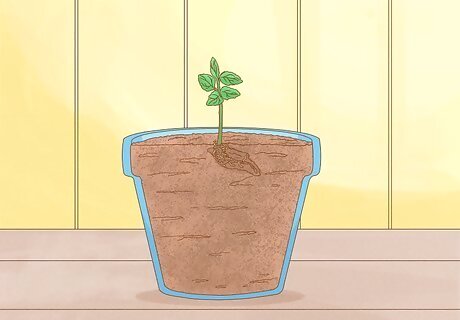
Plant the rooted sprig or seedling with the roots just below the soil. If planting multiple seedlings, plant them 6 inches (15 cm) apart. This will give each seedling enough room to grow.
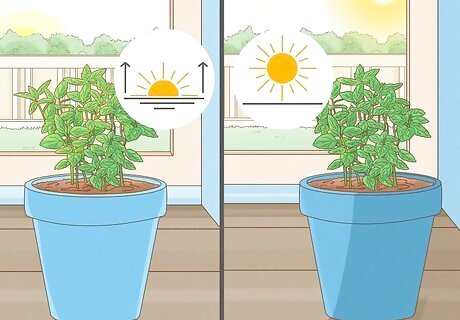
Choose a location with adequate sunlight. When you plant your mint or place down your potted mint plant, you'll need to choose an area that receives morning sun and partial afternoon shade. You want the plant to get some light without drying it out completely. Mint grows best in deep, moist soil, so you want to keep it that way. You can even place your mint pot indoors, on a windowsill, as long as it's in a location that will get enough sunlight.
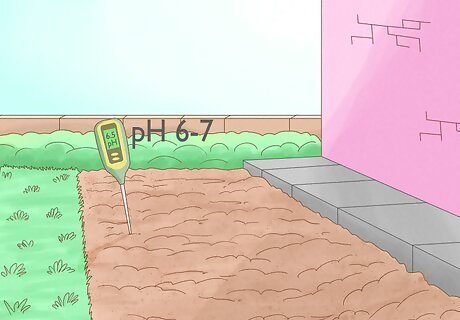
Consider the location if you are planting in the ground. If you're planting it in the ground, then use a damp area with full sun or partial shade. The best conditions for growing mint in the ground require a fertile soil with a pH that is between 6.0 and 7.0. Though it can grow on its own without a problem, a little bit of fertilizer every few weeks won't hurt it. Make sure that the soil is moist by placing some mulch around the plant's roots to protect them.
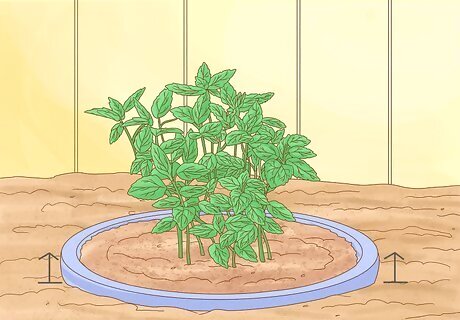
Submerge the container if planting in a flower bed. If you go this route, you should submerge your mint in a container, such as a pot or a mesh bag that is at least 5 inches (about 13 cm) deep. You should leave the rim of the container above ground level so that the plant's root system will be contained. If you don't do this, your mint will spread rapidly into places you don't want it to be. You can also plant mint in its own raised bed container, on a bare spot in your garden that you would like to fill in, or section off part of your garden with bricks or timbers to create a barrier for the mint.
Caring for the Mint
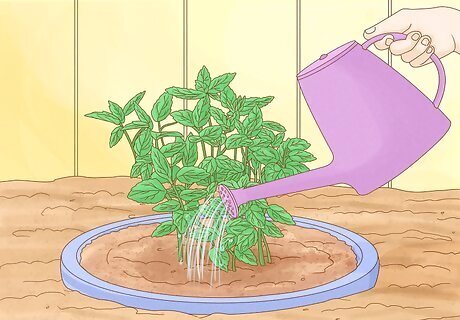
Water your mint often. During the first year that you have your mint, you will need to water it frequently. Test the soil with your finger to determine how dry it is. Keep the soil damp, but don't soak it. If your mint is in direct sun, water it more frequently. Check on it frequently to make sure that it gets adequate water, but not too much.
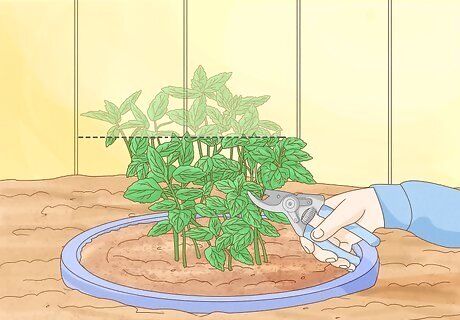
Trim the top of the plant. This will help to contain the plant's height and keep the leaves nice and full around the sides of the plant. This also creates a better harvest. When you check on your plant to see if it needs water, see if the plant has gotten too tall.
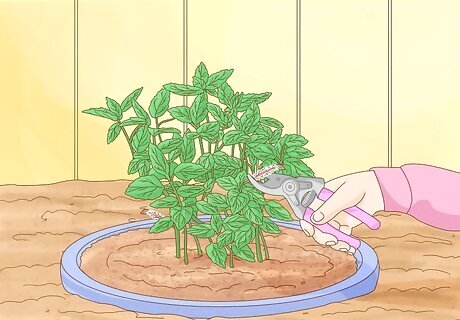
Trim the mint's flower buds to keep the plant compact. A mint plant's small flowers will typically bloom from June to September. You should trim the buds before they have a chance to open so the plant doesn't grow out of control. Pinching off the plant's flower buds as they appear will also extend your plant's harvesting season.
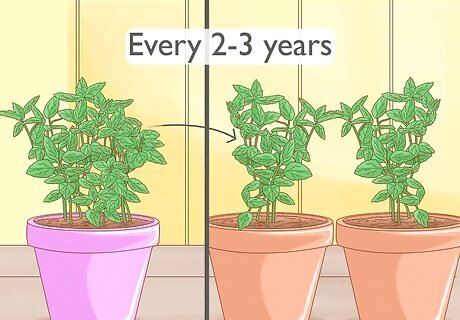
Split your plant every two or three years. Do this only if you are growing it in a pot/container. After a few years, your mint will match the size of the container, causing its roots to become cramped. De-pot it and carefully split apart the mint into several plants. Lifting and replanting your mint every two to three or even three to four years will help keep the scent and the flavor of the mint nice and strong.
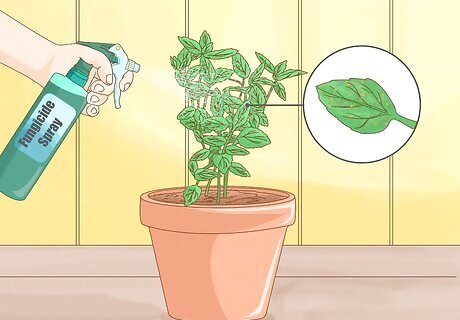
Treat your mint with a fungicide spray if it gets infected by rust. Rust, a fungus that creates orange-brown patches on the undersides of a plant's leaves, is one of the few diseases that mint is susceptible to.
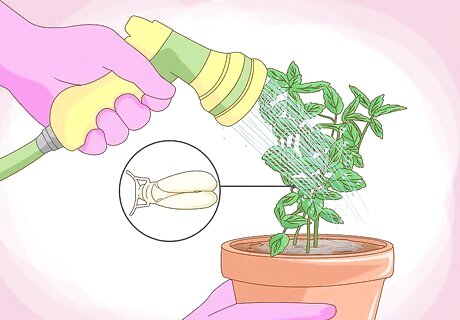
Watch out for pests and diseases. Your plant may fall victim to diseases such as verticillium wilt or mint anthracnose and it may be infested with insects such as flea beetles, root borers, spider mites, or root weevils. This is not a likely occurrence, however, since the strong odor of mint wards off most insects and other pests. Just provide good air circulation and soil that is well-drained to keep your plants healthy. If you notice any insects, spray them off with a garden hose. You can also wash your leaves with insecticidal soap. Make sure to look for pests under the leaves of the plants, too. This is a place where they like to hide.
Harvesting Your Mint
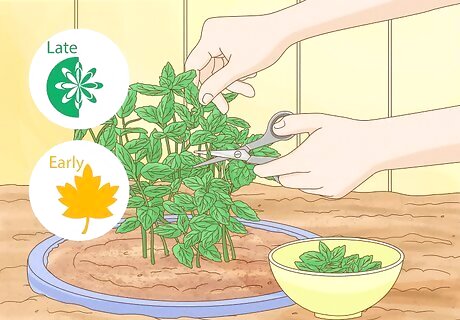
Harvest fresh green leaves as desired from the late spring through the early autumn. Never harvest more than 1/3 of the leaves at once and allow the plant to regrow before harvesting more. You can just harvest as much mint as you need at a time. If you want to air-dry your mint, then you should hang the stems upside down. Separate them into bundles secured with some string or a rubber band or spread them on a flat surface. When the leaves and stems feel crispy and dry, pluck off the leaves and put them into jars, Ziploc bags, or plastic containers with lids.
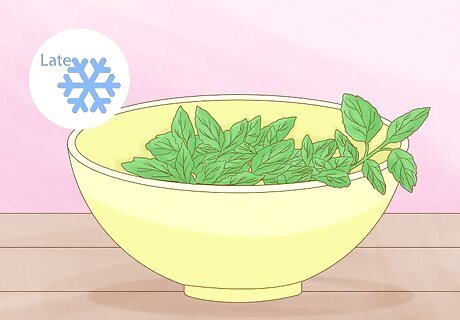
Harvest as much mint as possible before the frost each year. The roots will survive the frost and regrow the following spring, but the above-ground plant matter will die off. Protect your mint roots by covering the plants with a layer of mulch before winter. To harvest the leaves, you should pinch off the stems. If you have a larger harvest, then wait until right before the plant blooms and cut the whole plant just above the first or the second set of leaves. Typically, you can harvest a larger harvest of mint about three times a season.
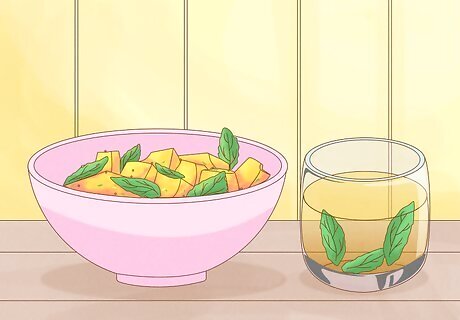
Use your mint. There are endless uses for mint, and you can do whatever you like with it. However, there are some typical uses of mint that you should be aware of. Here are some great ways to use it: Serve it as a compliment to fish, chicken, lamb, or another protein dish. Use it to spice up veggies such as carrots, peas, and potatoes. Spice up salads such as fruit salads, fig and radish salads, or walnut and goat cheese salads. Use them in drinks such as iced tea, punch, or lemonade. Use the mint in cocktails, such as the mojito or the mint julep.















Comments
0 comment